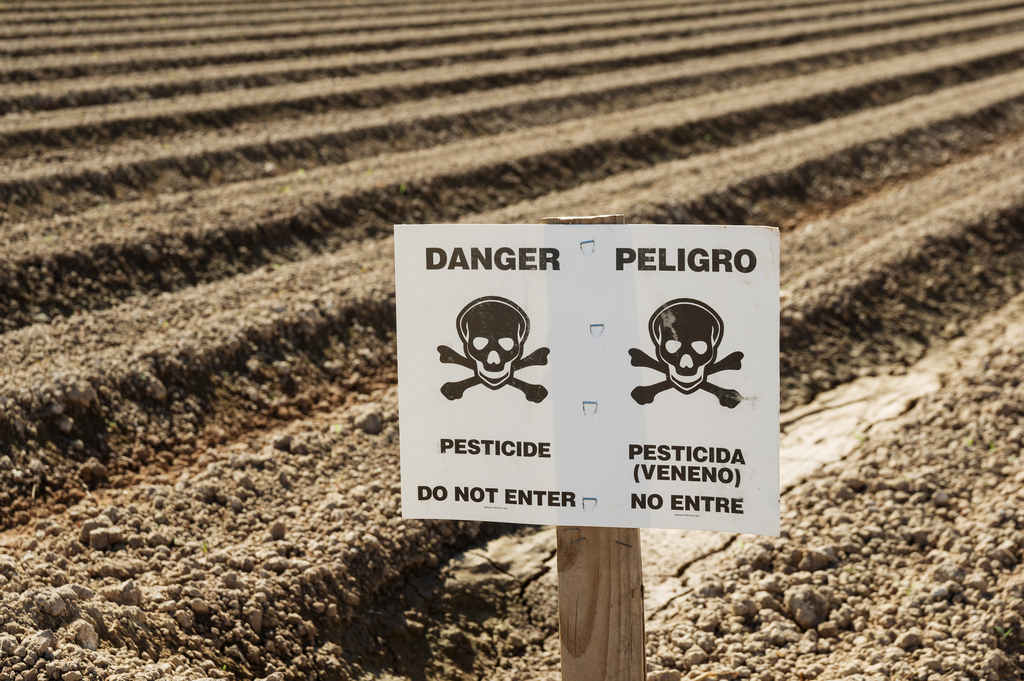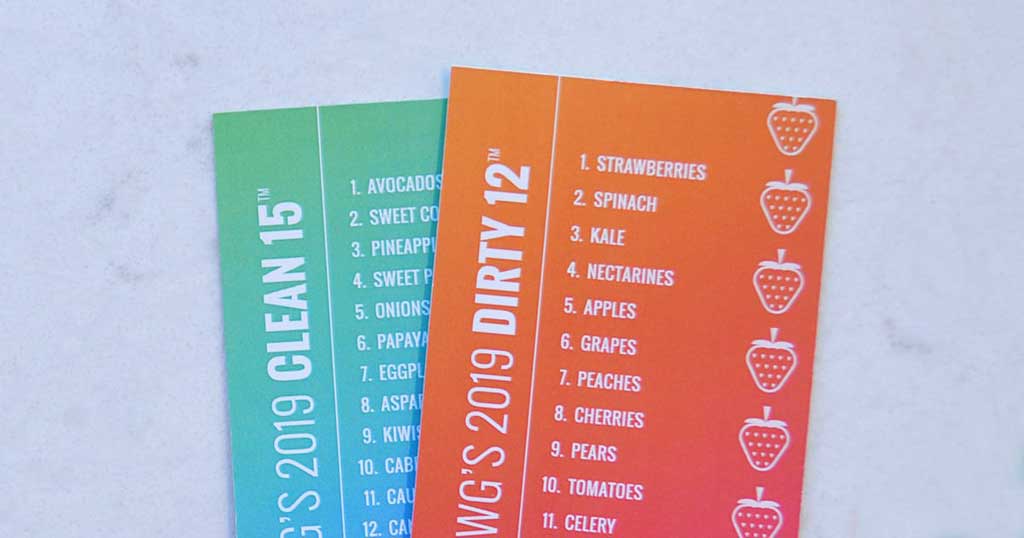When it comes to pesticides, our daily food choices can be detrimental to our health.
The majority of pesticides used on U.S. farms do not show up on our food. Why is this a problem then? And how much pesticide exposure from your diet is too much? These questions depend both on the pesticide used and who’s being exposed.
According to Environmental Working Group’s (EWG) analysis of test data from the U.S. Department of Agriculture, nearly 70 percent of the produce sold in the U.S. comes with pesticide residues.1
Other scientific studies have shown – that the remaining levels of pesticides left on our produce – can cause harm to fetuses, children in the short term, and adults long term.
Unfortunately, washing your fruits and veggies (while important) isn’t much help when it comes to pesticides. Many of the pesticides used today are “systemic,” meaning they are taken up by roots and distributed throughout the plant — so no amount of washing will remove them.



CDC Chlorpyrifos Study
A study by the Centers for Disease Control (CDC), sampled Americans for the insecticide chlorpyrifos, it showed up in 93 percent of people tested. 2
Children (6 – 11 years) showed levels almost twice as high as those of adults . Chronic exposure levels were 4.6 times the “acceptable” level for children and 3.0 times the “acceptable” level for youth (12 – 19 years) . 2
- Learn about proper hygiene, cross contamination, cold and hot food safety, foodborne pathogens, and best practices to prevent foodborne illness.
- Food Manager Training & ANSI Certification - $99.00
- Food Handler Training - only $7.00!
- HACCP Training: 16hr/4hr/1hr
- Food Allergy Training - $15.00
- Enter Promo "train10off" at Checkout
About Chlorpyrifos
Chlorpyrifos is an insecticide now only widely used on farms. Humans can be exposed to chlorpyrifos by way of ingestion (e.g., residue on treated produce, drinking water), inhalation (especially of indoor air), or absorption (i.e., through the skin). 2,3,4
Scientific studies of chlorpyrifos exposure have shown that residual pesticides symptoms and effects range from nervous system effects, headaches, blurred vision, seizures, coma, cancer, fetus abnormalities, to death, depending on the amount and length of exposure.. Because of such harm to humans, most home use was banned in 2001 in the U.S.



How can chlorpyrifos affect health?
Breathing the air in an area in which chlorpyrifos has recently been sprayed may produce a variety of effects on the nervous system including headaches, blurred vision, watering of the eyes (called lacrimation), excessive salivation, runny nose, dizziness, confusion, muscle weakness or tremors, nausea, diarrhea, and sudden changes in heart rate. The effect depends on the amount in the air and length of time exposed.
Ingesting chlorpyrifos orally through contaminated food containers or, in the case of children, putting objects of hands in their mouth after touching chlorpyrifos, may cause similar symptoms.
Exposure to high levels may cause severe sweating, loss of bowel control, severe muscle tremors, seizures, loss of consciousness (coma), or death.
Exposure during pregnancy may harm the mental development of children. 2,3,4



Worst and Best Pesticides Residue Produce List
The Environmental Working Group (EWG) classifies produce – by pesticide reside amount – by releasing a list every year called the “Dirty Dozen,” which names the 12 items of produce that contain the most pesticides. There is also a Clean 15 List – for the produce that contain the least pesticides.
For a complete itemization of the Dirty Dozen and Clean 15, check out the lists below. And for the full report, visit ewg.org/foodnews.



Dirty Dozen List
Conventional agriculture continues to use large quantities of toxic pesticides. This is why Environmental Working Group updates its Lists each year.
The Environmental Working Group – Dirty Dozen List helps protect your family from pesticides.1
- Strawberries
- Spinach
- Kale
- Nectarines
- Apples
- Grapes
- Peaches
- Cherries
- Pears
- Tomatoes
- Celery
- Potatoes
- Bonus: hot peppers
Clean 15 List
The Environmental Working Group – Clean 15 List – for the produce that contain the least pesticides. These food staples are considered some of the cleanest produce available.1
- Avocados
- Sweet corn
- Pineapples
- Frozen sweet peas
- Onions
- Papayas
- Eggplants
- Asparagus
- Kiwis
- Cabbages
- Cauliflower
- Cantaloupes
- Broccoli
- Mushrooms
- Honeydew melons
Get the The Environmental Working Group report here.



References
- EWG’s 2019 Shopper’s Guide to Pesticides
- Pesticide Action Network: Chlorpyrifos Factsheet (PDF)
- Agency for Toxic Substances and Disease Registry – Toxic Substances Portal – Chlorpyrifos; Toxicological Profile for Chlorpyrifos
- Wikipedia. Chlorpyrifos
- Chlorpyrifos General Fact Sheet
- CHLORPYRIFOS – GENERAL FACT SHEET, National Pesticide Information Center (PDF)
- Chlorpyrifos Technical Fact Sheet – National Pesticide Information Center
- Chlorpyrifos Pesticide Information Profile – Extension Toxicology Network
- EPA’s Chlorpyrifos Page
- CDC – NIOSH Pocket Guide to Chemical Hazards – Chlorpyrifos
- Chlorpyrifos Information
- Dow’s Chlorpyrifos Page






